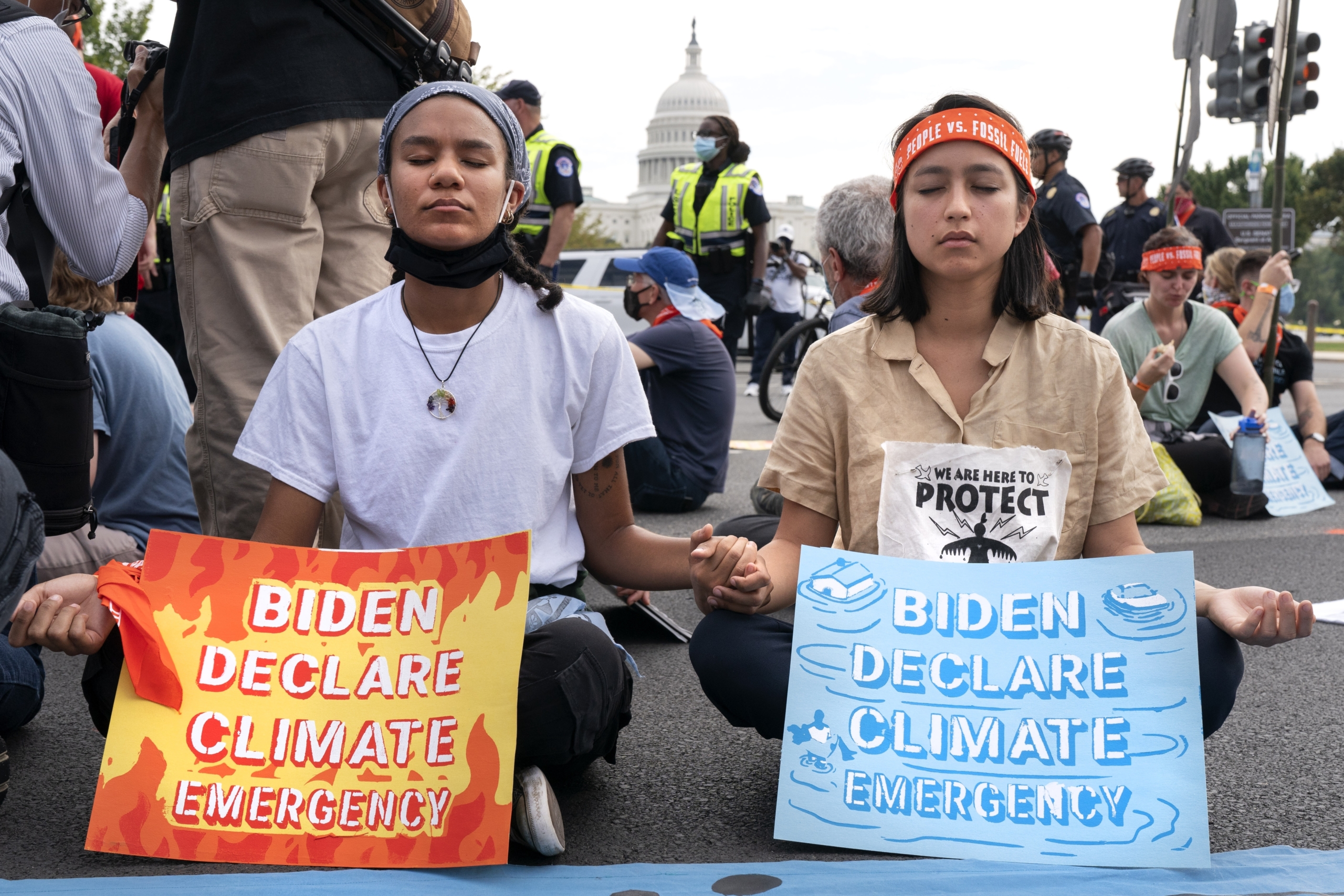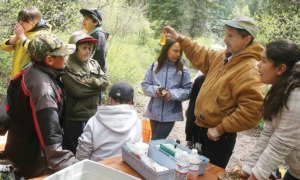When Nnennaya Ihejirikah, an 18-year-old climate activist from Texas, stood before the Capitol Reflecting Pool with the White House behind her and a microphone in front of her, she knew the window for enacting major climate legislation was closing.
As she addressed dozens of people that day in June, including members of Congress, she called for billions in climate investment to prevent the very worst outcomes of an intensifying crisis that will define her generation. President Joe Biden’s Build Back Better bill had been declared dead months ago.
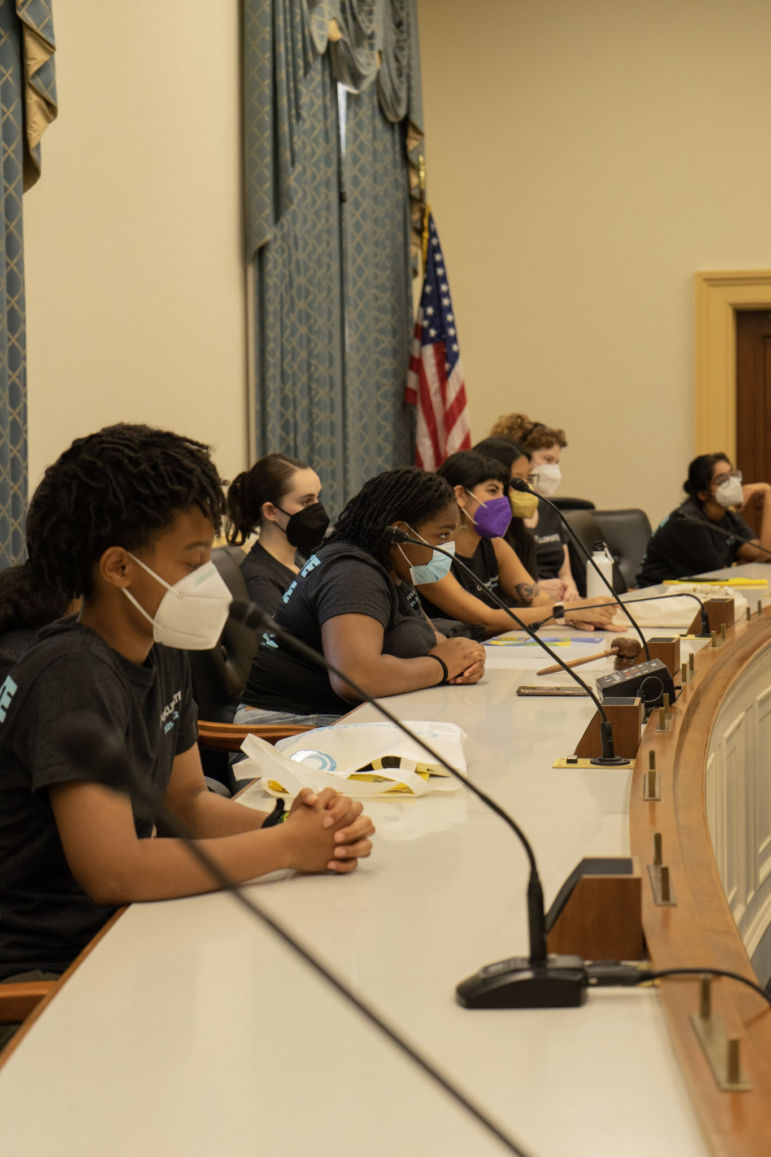
Courtesy of Our Climate
Nnennaya Ihejirikah, center, and other Our Climate fellows met with aids and members of the House as part of the #555ForOurFuture rally advocating for $555 billion in climate investments on June 15, 2022.
“Everyone realized that if the Build Back Better or a climate bill doesn’t get passed, we are in a really bad place,” recalled Ihejirikah, a youth fellow with Our Climate, a nonprofit that engages young people to advocate for climate justice policies.
“We had to put all our eggs in one basket,” she said. “So that’s why we all kind of centralized towards this one issue.”
Over the summer, youth climate activists ramped up their campaign, organizing petitions, sit-ins, protests and rallies at Congress and state capitols across the country.
Their persistence appeared to pay off when Biden signed the Inflation Reduction Act, the federal government’s largest investment in climate action ever, on Aug. 16. The law includes about $370 billion for renewable energy, environmental justice and infrastructure upgrades
Hannah Malus, the director of environment & energy at the Center for American Progress, a liberal Washington D.C.-based think tank, said youth climate activists were critical to the passage of the IRA — especially when other groups faltered or gave up.
“I think the fact that we have the IRA is a testament to the fact that their activism works,” Malus said. “If young people had sat on the sidelines, they would not have had it today.”
Now, youth climate activists say they are focusing their attention on making sure politicians follow through with their climate commitments, and ramping up their efforts to influence state and local politics.
“Where we are heading now is going to the place of execution and making sure that funding gets onto the ground to the communities that need it most and have long been neglected and are already experiencing the brunt of climate change impacts both domestically and globally,” said Saad Amer, 28, a New York-based climate activist.
Amer said many organizations were still in the process of regrouping to figure out next steps. But one thing is clear.
“There is still a really important place for democracy and for the movement around voting,” said Amer, who helped found Plus1Vote, a get-out-the-vote nonprofit that is offering free rides to the polls in five swing states this November. “We still need elected officials who fundamentally understand the consequences of inaction on climate and who are visionary in their leadership.”
Trump era galvanized youth climate movement
The youth climate movement has grown and taken on new urgency over the past five years.
The wave of activism that followed former President Donald Trump’s election spurred a new generation to the streets. 2018 was a turning point.
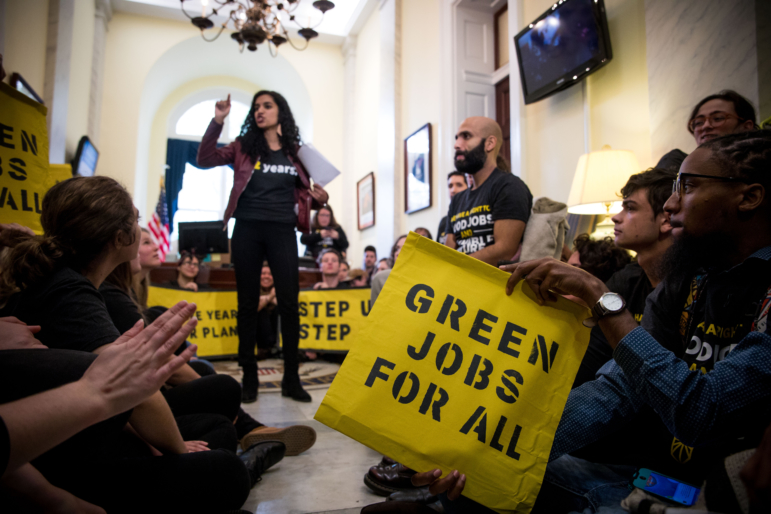
Rachael Warriner/Shutterstock
Youth activists with the Sunrise Movement occupy Nancy Pelosi’s office to demand that she and the Democrats act on climate change on Nov. 13, 2018.
That summer, the youth-led Zero Hour led coordinated marches in Washington and in cities across the country demanding action on climate change. The movement was also taking off globally, with 15-year-old Greta Thunberg of Sweden and others leading student climate strikes around the world.
In November, Alexandria Ocasio-Cortez, 29, became the youngest woman elected to Congress after campaigning on a Green New Deal that promoted the economic benefits of investing in clean energy. Around the same time, the youth-led Sunrise Movement made a name for itself when it organized a sit-in at incoming Speaker Nancy Pelosi’s office.
Constance Flanagan, a professor emerita at the University of Wisconsin who has researched youth and activism, said youth climate activists in particular have taken advantage of technology and social media to build diverse coalitions that place climate at the intersection of issues like racial and economic justice.
“They have a very sophisticated political analysis that brings together issues, but that’s informed by other movements that have been going on in recent years,” she said.
Related Stories
• Electrical workers union trains Chicago youth for growing solar market
• After a win for U.S. climate change education, classroom implementation is off to a slow start
• Youth find hope restoring Rio Grande wetlands threatened by climate change
• Youth and climate change: How a generation is adapting while fighting for their future
Malus, from the Center for American Progress, also said young people helped create and sustain pressure on political leaders.
In the years since, more youth climate activists have been elected to public office, including Yassamin Ansari, who in 2021 became the youngest candidate ever elected to the Phoenix City Council at age 28. Young voters also helped elect environmentally-friendly candidates like Massachusetts Senator Ed Markey, who campaigned as the “Green New Dealmaker,” in 2020. And they take credit for pushing Biden, who initially received an F during the primaries from Sunrise, to adopt a stronger stance on climate change.
“Especially for folks who ran on platforms of climate action, they have been especially good at holding them accountable,” Malus said.
Amer, the youth activist in New York, said the movement had succeeded in making climate change a “top-of-line political issue.”
“The IRA legislation would not have passed or existed without the climate movement and without that consistent and persistent effort of young people and people of color organizing,” he said.
Looking ahead
While many young climate activists celebrate the historic climate bill, they have already started organizing around what they see as its shortcomings.
In addition to providing billions for clean energy, the bill also included concessions to the fossil fuel industry that reportedly helped win the support of West Virginia Sen. Joe Manchin, a key vote. The law requires the federal government to open federal land to oil and gas production and puts time limits on environmental reviews of new projects.
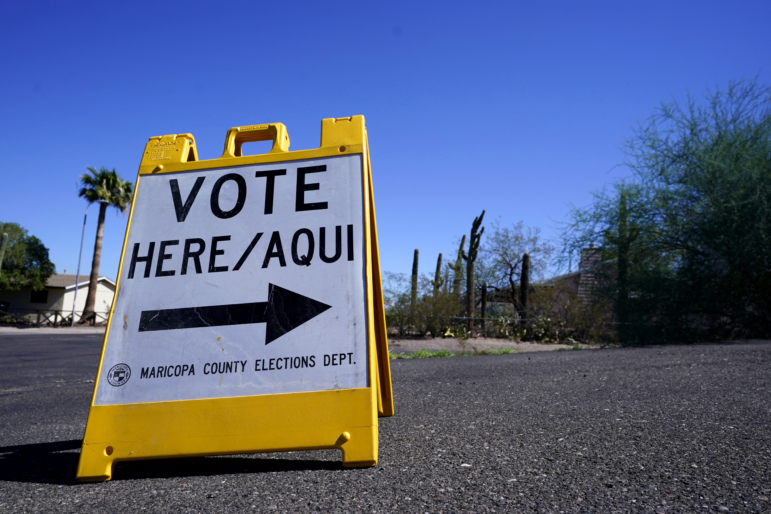
Ross D. Franklin/AP
A sign marks the entrance to a voting precinct on the first day of early voting in the general election in Phoenix, Wednesday, Oct. 12, 2022.
“This bill proved that we have the power, but we are still at a standstill,” said Ihejirikah. “They basically said, ‘we’ll really listen to you next time.’”
Now, youth activists are advocating for policies and plans to take advantage of the billions in federal funding for clean energy that could render the bill’s concessions to the oil and gas industry moot. That means accelerating the clean energy transition and voting in candidates up the down the ballot who will prioritize climate change.
“Local municipalities, cities, towns, as well as school boards are increasingly becoming a contestable site of politics,” said Mejia of Sunrise. His organization is in the process of launching two new campaigns: a Green New Deal for communities and a Green New Deal for schools.
Shiva Rajbhandari, an 18-year-old high school senior in Boise, Idaho, recently won a seat on his school board following several years of local climate activism that resulted in the district passing a clean energy commitment.
One of Rajbhandari’s priorities as a member of the school board is holding the district accountable on that commitment and pushing for a more aggressive timeline.
“Our school district can save millions of dollars — energy is their second largest expenditure,” he said. “We just need to put together a climate action roadmap.”
Rajbhandari said elections are key, pointing to other young progressives running for office across the country, like 25-year-old Maxwell Frost in Florida and 19-year-old Sam Lawrence in Ohio. But he also sees a place for performance art, civil disobedience and creative protest in the youth climate movement.
“[Accountability] looks like going and sitting in our Congress people’s office and banging on pots and singing out loud and refusing to leave until they take action,” he said. “It looks like building out a broader coalition and raising awareness about the power of one’s vote and one’s voice, especially the youth vote and the youth voice.”
***
Sarah Sax is a freelance writer based in Brooklyn, New York, who covers climate change and the environment.


